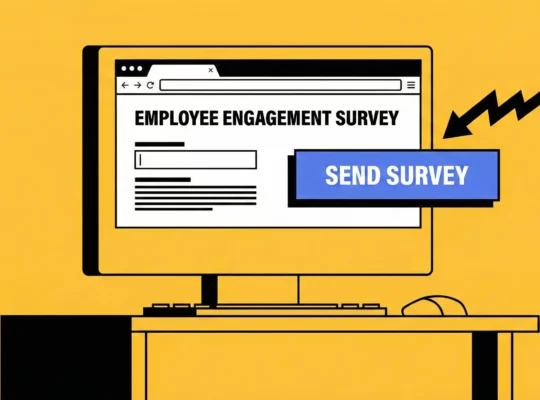Are you looking to enhance your performance management process? Do you want to create reviews that truly drive growth and engagement? Crafting impactful performance reviews is essential for HR professionals aiming to foster employee development and elevate organizational performance. However, the process can often be challenging, requiring a delicate balance of providing constructive feedback while maintaining employee morale. This article serves as a comprehensive resource, equipping HR professionals like you with a robust collection of employee review phrases you can leverage to deliver meaningful and actionable feedback. These phrases are carefully designed to help you articulate both accomplishments and areas for development effectively and fairly.
The purpose here is to provide you with a diverse toolkit of feedback statements that can be adapted to various performance levels and situations. More than just providing phrases, though, this guide will help you understand the why behind effective feedback, emphasizing the importance of aligning your evaluations with core company values and strategic business goals. By doing so, you can ensure that your performance reviews are not only comprehensive, but also contribute tangibly to the overall success of your organization. At Review.jobs, we understand the crucial role that HR professionals play in cultivating a thriving workplace culture, which’s why we’ve created this guide to empower you with the tools you need to excel in performance management.
Key Performance Areas: Phrase Banks for Every Category
Why Specificity Matters:
Avoid vague feedback, like complimenting someone by simply saying “good job.” Providing specific examples of behavior dramatically increases the impact of performance evaluations. Instead of generic praise, use concrete examples that showcase both positive and negative behaviors. This approach ensures that your feedback is clear, understandable, and directly relatable to the employee’s daily activities. Providing specific examples of behavior helps employees understand what they are doing well and what they need to improve upon.
When discussing improvements, make sure to explain the potential impact of these actions on the team and the company’s goals. For instance, instead of saying “Your time management needs improvement”, you could say “There’s an opportunity to improve time management to ensure project deadlines are consistently met, which will enhance our team’s overall efficiency and output”. This helps the employee understand the why behind the improvement recommendation, motivating them to prioritize the identified area for development. Always connect any specific feedback to observable Key Performance Indicators (KPIs) and metrics whenever possible. For example:
| KPI | Exceeds Expectations | Meets Expectations | Improvement Needed |
| Customer Satisfaction | Consistently receives exceptional customer feedback with ratings above 95%. | Regularly meets customer satisfaction targets with ratings between 85% and 95% | Customer satisfaction ratings frequently fall below the established 85% target. |
| Project Completion Rate | Completes all projects ahead of schedule and under budget. | Consistently completes projects on time and within budget. | Frequently misses project deadlines or exceeds budget allocations. |
| Sales Quota Achievement | Exceeds sales quota by 20% or more. | Achieves sales quota consistently. | Regularly falls short of sales quota targets. |
Setting the Stage:
Prior to conducting performance review meetings, meticulous preparation is essential. Gathering data from multiple sources, including self-assessments, peer feedback, and project reports, ensures a comprehensive view of the employee’s performance. Reviewing past performance evaluations provides context and allows you to track the employee’s growth trajectory. Make sure to clearly explain your expectations for performance in each review season, as well.
Acknowledging improved performance from previous evaluations demonstrates that you remember past conversations and that their effort to grow has been noticed. For example, you could say, “I recognized your development of your communication skills and proactive approach to problem-solving this quarter.” A transparent and well-defined plan will lead to goal achievement. Clearly communicate the expectations for future performance, setting a positive tone for continued growth and future collaboration.
Teamwork & Collaboration
When commenting on teamwork, comment on listening skills.
- Positive:
- “Shows great commitment to teamwork by actively contributing to team projects and discussions.”
- “A strong team player; actively supports colleagues and offers invaluable assistance.”
- “Demonstrates excellent listening skills and values diverse perspectives, contributing to a more inclusive and collaborative team environment.”
- “Actively helps others during busy times, ensuring that the team meets its deadlines and objectives.”
- Areas for Improvement:
- “Could benefit from actively soliciting feedback from team members to enhance collaboration and ensure alignment on project goals.”
- “Opportunity to improve communication and collaboration with other team members to foster a more cohesive and productive team environment.”
- “Needs to work on including others in the decision-making process to foster a more collaborative and inclusive team environment.”
Communication Skills
- Positive:
- “Communicates effectively, delivering clear and concise messages.”
- “Presents ideas confidently and persuasively.”
- “Maintains open and honest communication.”
- “Demonstrates active listening skills, ensuring effective dialogue and understanding.”
- Areas for Improvement:
- “Struggles to communicate ideas effectively; Consider training or mentoring to enhance communication effectiveness.”
- “Needs to improve written communication clarity to ensure messages are easily understood.”
- “Should practice active listening to better understand others’ perspectives, thus fostering collaboration.”
- “Opportunity to develop public speaking skills to enhance the delivery of persuasive presentations.”
Initiative & Proactive Behavior
For someone who constantly takes actions and is responsible give them feedback by using phrases such as “proactive” or “takes initiative“.
- Positive:
- “Consistently takes initiative and seeks out new challenges, demonstrating a proactive approach to expanding skills and contributions.”
- “Proactively identifies and resolves problems, minimizing disruptions and ensuring smooth operations.”
- “Goes above and beyond to meet deadlines and exceed expectations, reflecting a strong work ethic and dedication.”
- “Demonstrates a strong sense of ownership, taking responsibility for tasks and projects from start to finish.”
- Areas for Improvement:
- “Could benefit from taking more initiative on projects, bringing new ideas and approaches to the table.”
- “Needs to be more proactive in identifying and addressing potential problems, anticipating challenges and taking preventive measures.”
Problem-Solving & Decision-Making
- Positive:
- “Finds creative solutions to complex problems, demonstrating a unique and innovative approach to challenges.”
- “Effectively resolves issues and makes sound decisions based on thorough analysis and thoughtful consideration.”
- “Demonstrates strong analytical and critical thinking skills, enabling effective problem solving and informed decision-making.”
- “Thinks strategically to address problems effectively, developing long-term solutions that align with company objectives.”
- Areas for Improvement:
- “Needs to develop problem-solving abilities; consider workshops or mentoring to enhance skills and effectiveness.”
- “Can improve decision-making skills by gathering more information and considering different perspectives, ensuring well-rounded and informed decisions.”
- “Sometimes struggles to analyze problems fully, leading to incomplete solutions and missed opportunities.”
Time Management & Productivity
- Positive:
- “Always completes projects in a timely manner and consistently meets deadlines, ensuring tasks are completed efficiently and effectively.”
- “Effectively prioritizes tasks and manages time efficiently, maximizing productivity and minimizing delays.”
- “Highly productive and consistently delivers results, contributing significantly to team goals and company objectives.”
- Areas for Improvement:
- “Needs to improve on time management skills to meet deadlines consistently, enhancing efficiency and minimizing disruptions.”
- “Could benefit from better prioritization of tasks, focusing on the most critical items and allocating time accordingly.”
- “Needs to focus on eliminating distractions to improve productivity, creating a more focused work environment”.
Adaptability & Learning Agility
- Positive:
- “Easily comprehends new concepts and adapts quickly to changing circumstances.”
- “Demonstrates a willingness to learn new skills and technologies, staying current and relevant in a dynamic work environment.”
- “Embraces change and remains flexible in dynamic environments, thriving in evolving situations and maintaining a positive attitude.”
- Areas for Improvement:
- “Needs to be more receptive to new ideas and changing priorities, adapting to evolving projects and initiatives.”
- “Can improve adaptability by seeking out new training opportunities, enhancing skills and ensuring readiness for future challenges.”
Goal Setting & Achievement
It is recommended not to set goals that are too hard, or else it could demotivate team members.
- Positive:
- “Sets challenging goals and consistently exceeds expectations, demonstrating a commitment to excellence and high performance standard.”
- “Effective in developing SMART goals – Specific, Measurable, Achievable, Relevant, and Time-bound, ensuring clear and actionable objectives.”
- “Consistently achieves goals and contributes significantly to company targets, playing a key role in the organization’s overall success.”
- “Always pushes to exceed target goals.”
- Areas for Improvement:
- “Goals need to better align with company objectives.”
Quality of Work & Attention to Detail
Comments on work quality might include “high quality” and “attention to detail“.
- Positive:
- “Consistently delivers high-quality work with excellent attention to detail, resulting in exceptional outcomes and client satisfaction.”
- “Takes pride in their work and strives for accuracy, ensuring tasks are completed with precision and care.”
- “Always reviews work for errors and inconsistencies, maintaining a high standard of excellence and preventing mistakes.”
- Areas for Improvement:
- “Needs to improve attention to detail to avoid errors, ensuring consistent accuracy.”
- “Should focus on ensuring accuracy in all work, minimizing mistakes and delivering exceptional results.”
Key Phrases for Overall Performance & Potential
Acknowledge employee achievements by connecting them to company values.
- Strengths:
- “Excels at identifying and implementing innovative solutions.”
- “Demonstrates expertise in project management, consistently delivering results on time and within budget.”
- “A key strength is their ability to motivate and inspire the team, leading to enhanced collaboration and higher productivity.”
- “Valuable member of the team; we can’t thank them enough.”
- Areas for Improvement:
- “Opportunity to enhance their data analysis skills to provide deeper insights for decision-making.”
- “Could benefit from further developing leadership skills to better guide and mentor the team.”
- “Room for growth in strategic planning to align team goals more closely with company objectives.”
- “Needs to seek new training opportunities and improve on skill sets to become more productive.”
- Positive Attitude & Work Ethic:
- “Positive influence on the team atmosphere; always brings enthusiasm, energy and optimism.”
- “Enthusiastic and committed to their work, demonstrating a genuine passion for what they do.”
- “Demonstrates a strong work ethic and dedication, consistently going above and beyond to achieve results.”
- Overall Performance:
- “Without question, they consistently exceed our expectations.”
- “Meets our expectations; we are extremely pleased with the results.”
- “Is below expectations and in need of immediate improvement to exceed expectations.”
Avoiding Pitfalls & Ensuring Fair Reviews
Give constructive feedback for balanced reviews.
- Phrases to Avoid (and Why):
- “Good job” (too vague and doesn’t provide specific feedback)
- Overly harsh or judgmental language (can damage employee morale and hinder performance)
- Phrases that might lead to lawsuits or hurt feelings are not recommended.
- Legal Considerations:
- Briefly touch on the importance of avoiding discriminatory language to avoid lawsuits and hurt feelings.
- Emphasize basing evaluations on objective criteria and documented observations to ensure fair and unbiased assessments.
- The Importance of Action Plans & Follow-Up:
- Explain how to create actionable goals and development plans, setting clear objectives.
- Highlight the need for regular check-ins and ongoing feedback, facilitating continuous improvement and support.
- SMART Goals: Specific, Measurable, Achievable, Relevant, Time-bound – a framework to create effective and attainable goals.
Using thoughtful and insightful employee review phrases is crucial for encouraging employee growth and promoting fairness within the organization. HR professionals benefit greatly from using this guide, as it helps them improve their performance management processes. A positive, fair review positively impacts employee morale.
FAQ: Employee Review Phrases
What are Employee Review Phrases?
Employee review phrases are specific statements used in performance evaluations to provide feedback on an employee’s skills, performance, and behaviors. They help in delivering balanced and constructive feedback.
Why Use Specific Employee Review Phrases?
Using specific employee review phrases is essential for delivering effective feedback because they provide clarity, context, and actionable insights for employees and managers. General statements like “good job” or “needs improvement” lack the specificity needed for an employee to understand the impact of their behaviors and actions. Specific phrases offer more details and enable employees to pinpoint the actions that need improvement.
Where Can Employee Review Phrases Be Applied?
Employee review phrases can be applied during formal performance reviews, informal check-ins, project evaluations, and daily feedback conversations.
When Should I Use These Phrases?
Implement employee review phrases during scheduled performance evaluations, project-based feedback, and ongoing discussions to provide continuous feedback and foster employee development. The frequency of these evaluations depends on your organization’s performance management cycle.
Who Benefits From Using Positive Feedback in Employee Reviews?
- Employees: Benefits from specific feedback that recognizes achievements and offers actionable advice for future development.
- Managers: Gets an efficient way to perform useful evaluations, which supports direct team members and promotes productivity.
- HR Professionals: Able to promote an open, legal and supportive workplace, helping with talent development and meeting company targets.





